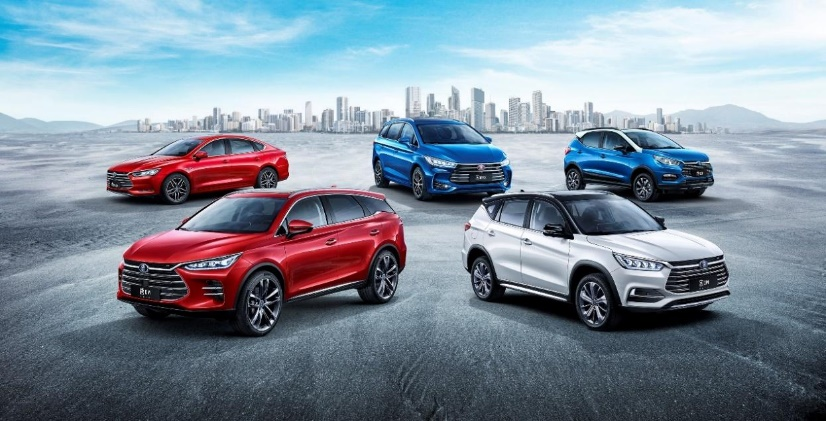*This article is reproduced from the official account of Autocarweekly.
Author: Financial World Senior Li
It’s just a matter of time for BYD to reach a market value of over trillions, but the issue now is how to buy it.
To be honest, writing financial articles is quite stressful. Every article that is delivered to the user must stand the test of time and the market. Earlier this year, Senior Li published an article “Give BYD a high-end brand and cross the trillion-dollar market value is within reach”, but now, the market value of BYD is close to breaking through the trillion-dollar threshold without the release of a high-end brand.
After the global market adjustments in Q2, BYD made a comeback in Q3, and its market value reached a new high of 881.49 billion. With just two limit-up, BYD can break through the trillion-dollar mark. Congratulations to those who have made money.
Yesterday was an extraordinary day for BYD and the automotive stock market because whether or not BYD can break through the trillion-dollar mark in the near future, it has created the best market performance for automotive companies in A-shares like no others. After the limit-up yesterday, BYD officially entered the top ten market values in A-shares, and except for Ningde Times and BYD, all other companies on the top ten list come from the banking and liquor fields.
Today, Senior Li will talk about the market and users’ views on BYD and how institutions view BYD, and how to determine BYD’s valuation in the future.
Buy BYD, Say Goodbye to “Taking it Seriously” First
Senior Li has mentioned many times in past articles that currently, the institutional funds in the secondary market are most bullish on the overall vehicle companies, especially BYD. However, few friends can take it to heart, which has a lot to do with BYD’s reputation. Whether it is the ordinary consumers or the secondary market retailers, everyone has a polarized view of BYD: part of them is true “Di Fans (a term referring to BYD’s fans),” and the other part are true passers-by or pedestrians, with few people switching sides.
In secondary market investment, the most feared thing is not to take it seriously but to take it too seriously, and polarized opinions are a kind of behavior that takes it too seriously. Capital pays attention to going with the flow, and only by keeping up with the “momentum” of the race and the company can it remain unbeaten. But as the saying goes, people always take it too seriously even if it is an experienced fund manager or a researcher, and they occasionally have a time of “taking it too seriously.”
Translation Note: A-shares refer to the shares of Chinese China mainland-based companies traded on the two Chinese stock exchanges – the Shanghai and Shenzhen stock exchanges.# Professional translation of the Chinese Markdown text to English Markdown text, preserving HTML tags inside Markdown, outputting only corrections and improvements.
Mr. Li takes things seriously and never buys entire car stocks. On the one hand, he is afraid that personal purchases would affect objective judgment, leading to misguidance for fund managers. On the other hand, because he is too familiar with the automotive industry, industry thinking may affect valuation judgments. By not buying car stocks, he completely missed the trend of the entire car market over the past year. He was scolded by his partners, but BYD is an exception. Mr. Li has always been recommending BYD to fund managers, even during the Q2 crash, because he still believed in it.
There is no long-term pessimism or optimism in A shares. Even high-growth or large-cap stocks have fluctuations, or so-called “cycles.” Similarly, looking at BYD should not be taken too seriously. In the long run, BYD exhibits an upward volatility trend. If you keep liking it, you may be affected by volatility when you don’t get off when it fluctuates. If you keep being skeptical, you may also miss this wave of high prosperity. Whoever can look at BYD objectively and neutrally can get on or off at the right time.
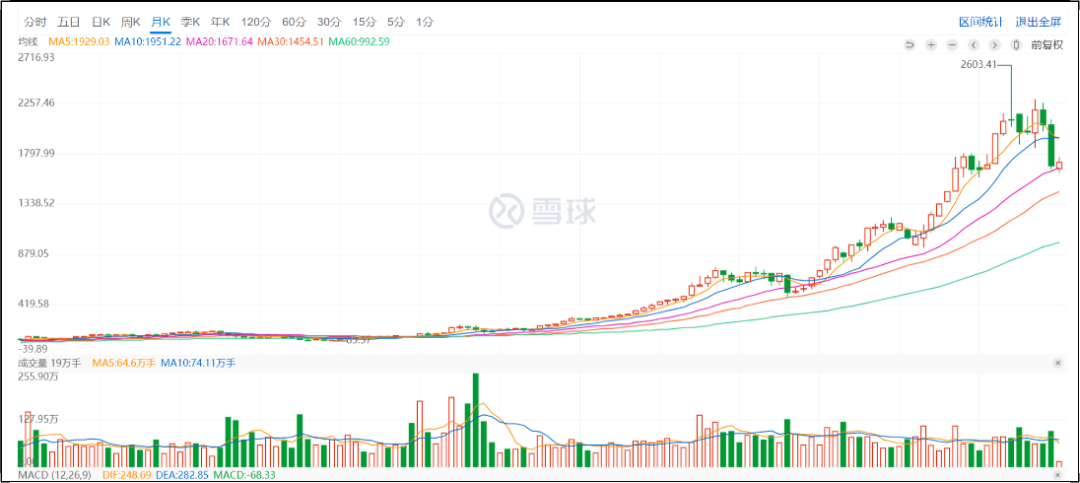
What cycle is the market in now? Mr. Li’s recent strategy for his clients is: focus on high prosperity tracks in the mid-term, lay out large-cap stocks in segments for the long-term, and allocate high prosperity technology stocks in the mid-term (with a focus on photovoltaics, new energy vehicle industry chains, and semiconductors). In the long run, he recommends large-cap stocks, such as Guizhou Maotai. When technology stocks hit a high point in Q4 or Q1 next year, he will find that current large-cap stocks are a gold mine.
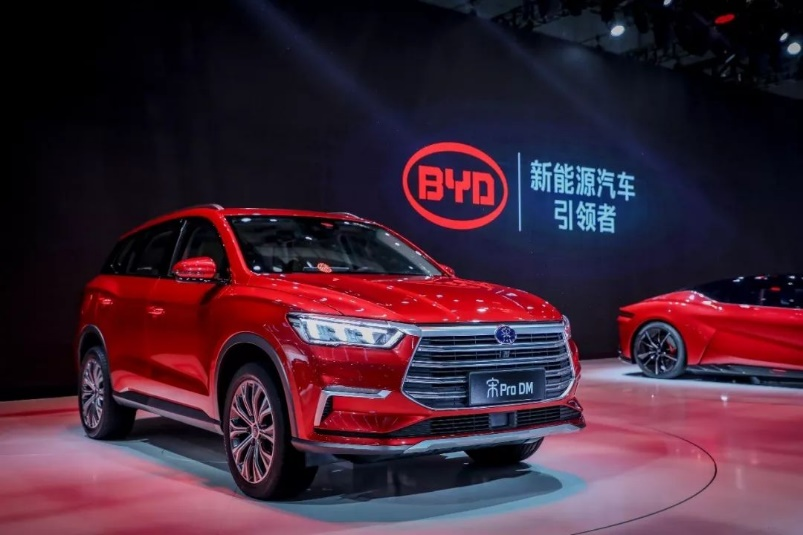
BYD is both a technology stock and a growth stock, and it is also a future large-cap stock. Even if it falls below a trillion yuan, it is still worth laying out but timing is crucial.
The three giants in the subdivision areas of technology stocks are: LONGi Green Energy Technology Co., Ltd in the photovoltaic field, Contemporary Amperex Technology Co., Limited in the new energy vehicle industry chain, and Semiconductor Manufacturing International Corporation in the semiconductor field. BYD’s business intersects with all of these areas (energy storage, power batteries, and BYD semiconductors). Among global automakers, Tesla is another company with intersections in these three popular areas (solar energy, power batteries, and autonomous driving chips). Seizing the track is the most valued factor in estimation, let alone a single company occupying three popular tracks, which is a foundation.
 Once you have selected the right track, confidence is important. Lao Li has recently been reading BYD’s online information which, whilst appearing to be a pile of data analyses, cannot withstand scrutiny. Without a deep understanding of BYD, it is easy to be misled. For example, if a friend buys BYD one day, and on the next day it drops drastically in the high transaction and tumultuous market environment of August, under the influence of online bearish information, it is highly likely that they will sell off, leaving them with a bad hand of cards.
Once you have selected the right track, confidence is important. Lao Li has recently been reading BYD’s online information which, whilst appearing to be a pile of data analyses, cannot withstand scrutiny. Without a deep understanding of BYD, it is easy to be misled. For example, if a friend buys BYD one day, and on the next day it drops drastically in the high transaction and tumultuous market environment of August, under the influence of online bearish information, it is highly likely that they will sell off, leaving them with a bad hand of cards.
Impartial objectivity is the foundation of transactions. In addition, confidence is needed, as well as identifying the right opportunity to get on board.
What type of company is BYD?
Previously, a friend left a message for Lao Li, saying that your analysis is correct, but we are not researchers and don’t have such an in-depth understanding of enterprises. Once the market changes, we are likely to let go, and we do not want to wait whilst prices soar. Lao Li is also pondering this issue, and how it could be possible to let everyone understand a company as comprehensively as possible, using the simplest language. After much thought, it seems that entering from a financial perspective would be easier to achieve.
BYD’s financial revenue mainly includes three major businesses, i.e., automotive, phone components and assembly, and second-life rechargeable batteries and photovoltaics, accounting for 99.70% of its revenue. Therefore, from a financial perspective, BYD is not only a new energy vehicle company, but also an electronic and battery company.
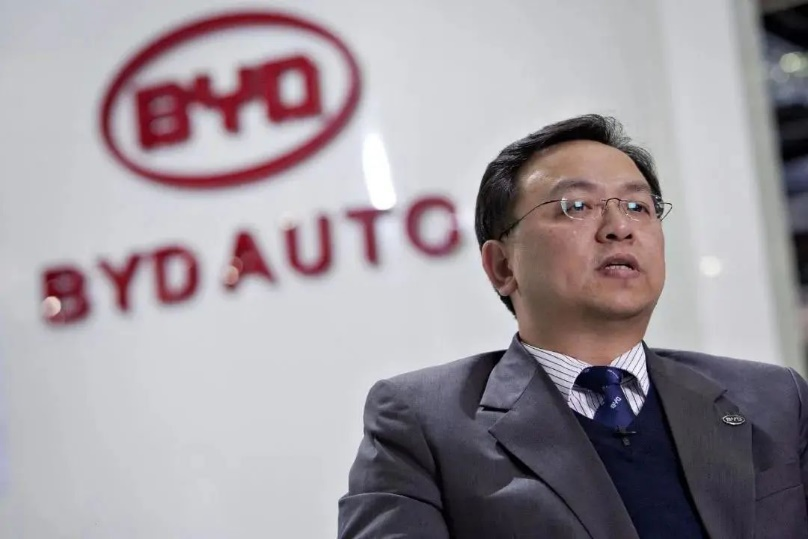
Since its listing in 2011 until now, BYD’s revenue has only declined in 2012 and 2019, with growth maintained in other years. The CAGR (compound annual growth rate) from 2014 to 2020 was 17.94%. At present, high-growth technology stocks are valued, but BYD’s growth performance over the past decade can only be described as moderate. BYD has been lukewarm for a long time due to this reason.
From last year onwards, the external environment has improved, and BYD’s performance and valuation have followed suit.
In 2020, BYD achieved its highest historical revenue of 156.598 billion yuan, a year-on-year increase of 22.59%. Automotive business performed the best, achieving revenue of 83.993 billion yuan, a year-on-year increase of 32.76%, accounting for 53.64% of revenue, with outstanding performance. After all, in the past five years, BYD’s CAGR for automotive revenue was only 15.62%, but in 2020, it doubled. In general, a yearly growth rate of over 30% puts them in the category of high growth.
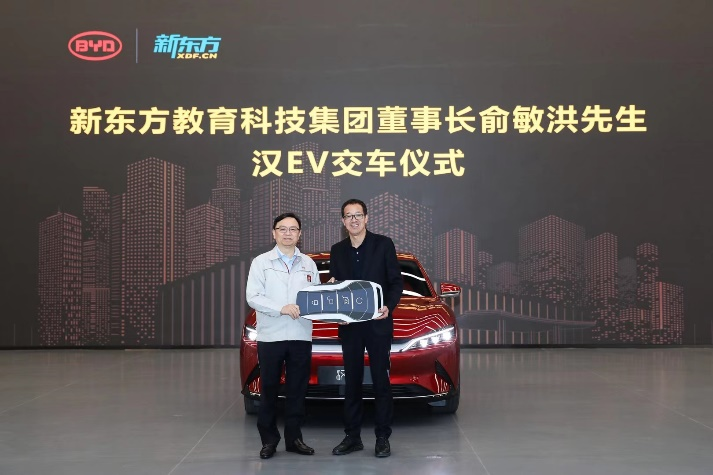 In the past five years, BYD’s automotive gross profit margin has been maintained at around 20%. However, in 2020, the gross profit margin of BYD increased to 25.20% due to the significant increase in sales of its middle and high-end models represented by its Han series, which not only raised the overall selling price but also improved the profit margin.
In the past five years, BYD’s automotive gross profit margin has been maintained at around 20%. However, in 2020, the gross profit margin of BYD increased to 25.20% due to the significant increase in sales of its middle and high-end models represented by its Han series, which not only raised the overall selling price but also improved the profit margin.
In the future, BYD will lay out its e-series, Dynasty series, and R series (future high-end brand) in the entire vehicle field, covering various price segments and mainstream electrification technology routes. Many researchers believe that by 2023, the revenue of BYD’s automotive business will exceed 120 billion yuan.
Mr. Li is more optimistic about BYD’s automotive business. Currently, Ningde Times is the benchmark for new energy vehicles, but it cannot represent the entire vehicle industry. As the downstream of the industrial chain, new energy vehicle companies also need a leader. Among many A-share vehicle companies, only BYD can bear this role.
In addition to the whole vehicle, BYD’s battery business (secondary charging batteries and photovoltaic) is also worth paying attention to. From 2015 to 2020, the revenue CAGR of the battery business was 14.73%, and the revenue in 2020 was 12.088 billion yuan, a year-on-year increase of 15.06%, lower than that of other battery competitors.
Although the historical data of the battery business has been average, imagination is good. In the past three years, the gross profit margin of BYD’s battery business has increased from 9.46% in 2018 to 20.16% in 2020, which is close to the gross profit margin of the whole vehicle. From the perspective of production capacity, BYD’s planned production capacity has reached 165 GWh, and it is expected to exceed 70 GWh by the end of this year. It is second only to Ningde Times in the industry.
From the customer’s perspective, there is a BYD battery customer map circulating on the Internet, which Mr. Li thinks is mostly accurate. Currently, BYD batteries have started to supply to Red Flag and B-Power. More than 10 other automakers also have orders to varying degrees and will release production capacity in the second half of the year. Among them, the most concerned one is the mysterious No. 56 customer, and many friends speculate that it is Tesla… Everyone can imagine.The electronic business, including mobile phone components, assembly, and other products, is BYD’s second largest business. It involves four major areas: intelligent smartphones and laptops, new intelligent products, automotive intelligent systems, and medical health. The revenue CAGR from 2015 to 2020 was 12.54%, with revenue of 60.043 billion yuan in 2020, a year-on-year increase of 12.48%. Although the revenue is high, its growth potential is not as good as its automotive and battery businesses. Overall, in terms of the industrial perspective of the business track or the financial perspective of gross margins, annual growth rates, and revenue, BYD’s performance justifies its valuation of 800 billion yuan.
Can we still invest in BYD’s trillion-dollar goal?
There is a trend in the secondary market now where investors only go long and do not short. They simply push forward when the weather is good, even if the price is very high, without disclosing any risks. This is the case with both brokerage analysts and online financial guru with regards to BYD. For example, some online users stated, “BYD’s success is definitely not luck or so-called policy dividend. Behind their success, there is a kind of inevitability. Old Wang’s strategic vision, implementation capability, and technical team are the company’s core competitiveness. As an ordinary Di fan and a barely-there investor, I always know what I am looking for and believe in.” And, “This is a very long runway, and we are now in the starting phase. People will leave at every corner and rest stop, no matter the market value, P/E ratio, sales volume, or any other reasons. Just as your loved one wants to leave you, your breath is also a mistake.”
These views are not entirely wrong, but they do not say anything concrete. Regardless of whether you are a fund manager or an individual investor, everyone wants a medium-to-long-term investment strategy, and the first priority of any strategy is risk management. When Old Li wrote an article about BYD breaking the trillion yuan mark in February, which was actually a market high point, investors would have had to bear the bear market fallout throughout Q2 if they were fully invested. You should know that during the entire Q2, BYD fell by almost 50%, which was a severe test for any investor. Currently, BYD seems to be in that position again. However, the difference is that the recent market is more volatile rather than experiencing a sudden drop as in the beginning of this year.
Facing companies like BYD, people will first consider the ultimate goal, then establish a steady investment strategy.Recently, many researchers discussed how large BYD’s market value could be, but failed to reach a conclusion due to two reasons: First, it’s hard to predict BYD’s future revenue because its three major business segments grow differently, making it difficult to make an accurate financial estimate unlike a steady enterprise; second, market trend after one year is difficult to gauge, where performance and valuation are two different things. Even if an enterprise’s performance is excellent, it will be dragged down if new energy vehicle concept declines.
Everyone agrees that BYD’s medium- and long-term direction is upwardly volatile, but the width of the volatility cycle cannot be determined as it depends on current market conditions. For instance, the previous cycle lasted up to three months. Translating this into practical operation strategies, it’s a good idea to allocate funds gradually—don’t chase high prices with full investment in February, because you’ll probably get caught, but if you allocate funds in batches and lay out during BYD Q2’s huge drop, you would achieve almost 100% ROI by now.
As for the present, allocating funds gradually to Moutai’s 1,600 price point can bring about a 62.5% high return rate if it breakthroughs to 2,600 next year. The A-share market has no constant performer. We will see rises and falls, but in the end, they will rise even higher.
Old Li teaches everyone a trick: You can change the daily K-line chart to weekly K-line chart. If you look at BYD’s daily K-line chart, you’ll feel anxious every day, worrying about a great drop, but if you change it to a weekly one, you’ll only need to check once a week, which will enhance your psychological state. Therefore, going from daily to weekly K-line chart lengthens the cycle and enables short-term investment to become long-term. The A-share market is a long-term investment market, and owning and reasonably allocating such companies as BYD can lead to excellent returns.
(This article is for reference and communication purposes only, and does not constitute investment advice.)
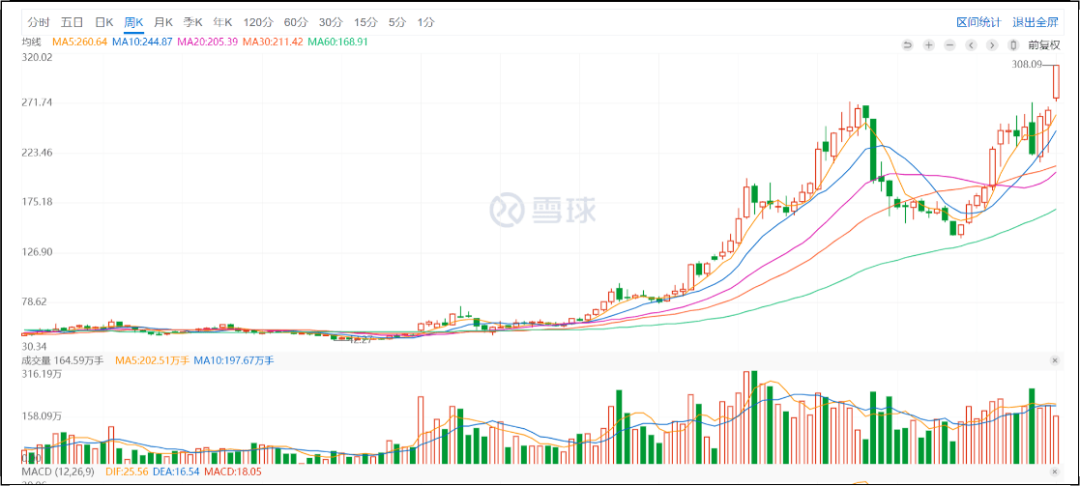
This article is a translation by ChatGPT of a Chinese report from 42HOW. If you have any questions about it, please email bd@42how.com.
